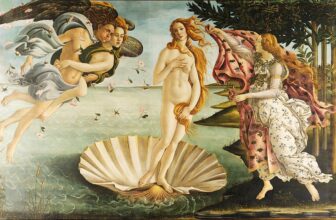
Who is Marie Antoinette
Marie Antoinette, one of history’s most fascinating and controversial figures, was the last queen of France before the French Revolution. Born on November 2, 1755, in Vienna, Austria, as Maria Antonia Josepha Johanna, she was the fifteenth child of Empress Maria Theresa of Austria and Emperor Francis I. Her life, marked by opulence, political intrigue, and ultimately tragedy, continues to captivate historians and enthusiasts alike.
Early Life and Marriage
Marie Antoinette grew up in the lavish courts of Vienna, where she received a broad education in music, dance, and etiquette, though she was criticized for her lack of academic rigor. At the age of 14, she was married off to Louis-Auguste, the Dauphin of France, to strengthen the alliance between Austria and France. The marriage, a significant political arrangement, brought her to the Palace of Versailles, a world of unparalleled luxury and rigid social hierarchies.
Upon her arrival, Marie Antoinette faced challenges adapting to French court life. The customs were foreign, and she initially struggled to gain the favor of the courtiers. Her husband, Louis-Auguste, was introverted and hesitant, adding strain to their marriage. In 1774, when Louis XVI ascended the throne, Marie Antoinette became queen at the tender age of 19.
The Queen of Fashion and Excess
Marie Antoinette quickly gained a reputation for her extravagant lifestyle. Known for her love of fashion, she frequently commissioned elaborate gowns, towering hairstyles, and ornate accessories, setting trends across Europe. Her spending earned her the nickname “Madame Déficit” as France’s economy faltered. Her fondness for the Petit Trianon, a private retreat within the grounds of Versailles, further fueled criticism. She transformed it into her personal sanctuary, where she hosted lavish gatherings away from the prying eyes of the court.
Contrary to popular belief, many of the accusations against Marie Antoinette were exaggerated or unfounded. The infamous “Let them eat cake” remark, for example, has no basis in historical records and was likely propaganda to tarnish her image. Nonetheless, she became a scapegoat for the growing discontent among the French populace, who saw her as a symbol of royal excess.
The French Revolution and Imprisonment
By the late 1780s, France was on the brink of revolution. Economic hardships, widespread famine, and calls for political reform led to the rise of revolutionary movements. The royal family’s perceived detachment from the plight of the common people further fueled unrest.
In 1789, the storming of the Bastille marked the beginning of the French Revolution. The royal family was forced to leave Versailles and relocate to the Tuileries Palace in Paris under close surveillance. Marie Antoinette attempted to maintain her dignity and influence, secretly corresponding with foreign powers to seek assistance in restoring the monarchy. However, these efforts only deepened suspicions against her.
In 1791, the royal family attempted to escape to Austria in the ill-fated Flight to Varennes. They were captured and returned to Paris, further eroding their credibility. In 1792, the monarchy was abolished, and the family was imprisoned.
Trial and Execution
Marie Antoinette’s trial began in October 1793. Accused of treason, depleting the nation’s resources, and other crimes, she faced a tribunal determined to seal her fate. Despite presenting a composed and dignified defense, she was convicted and sentenced to death.
On October 16, 1793, Marie Antoinette was executed by guillotine at the Place de la Révolution. She was 37 years old. Her final words, addressed to her executioner after accidentally stepping on his foot, were, “Pardon me, sir, I did not do it on purpose.”
Legacy
Marie Antoinette’s life and death remain subjects of enduring fascination. While she is often remembered as a symbol of royal decadence, modern historians argue for a more nuanced view. She was a product of her time, navigating a tumultuous period in history with limited power and agency.
Her story has inspired countless works of art, literature, and film, including Sofia Coppola’s 2006 film “Marie Antoinette,” which portrays her as a misunderstood and tragic figure. Today, she is seen as both a victim of circumstance and a complex historical figure whose life serves as a lens through which to explore the dynamics of power, privilege, and revolution.




